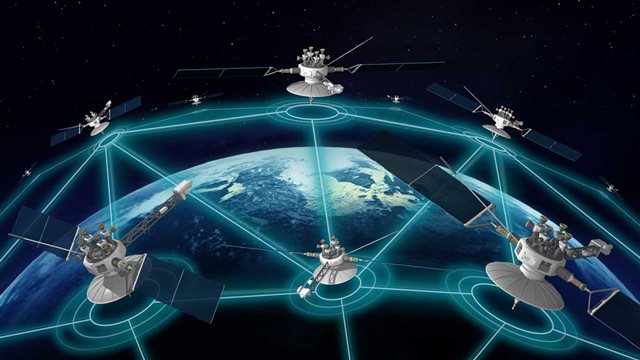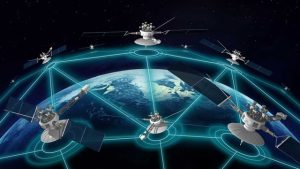
Star trackers actively assist satellites in determining their position by referencing the locations of stars. They operate on a simple astronomical principle: the relative positions of stars are known and remain constant. By capturing images of the starry sky and comparing them with a preloaded star catalog, star trackers precisely calculate a satellite’s orientation in space.

Camera or Sensor: The core of a star tracker, typically employing CCD or CMOS sensors, actively captures images of stars.
Processor: A dedicated processing unit handles image data, identifies stars, and calculates orientation. It runs sophisticated star pattern recognition and matching algorithms.
Baffle: The baffle blocks stray light, such as sunlight or reflections from thruster plumes, ensuring only the target star field is captured. Its design significantly impacts the star tracker’s performance.
Star Catalog Database: Star trackers store a database of star positions, often based on astronomical catalogs, for reference and matching.
Star trackers have evolved significantly since their inception, with different types suited for various applications:
Historical Types: Early star trackers often paired with inertial navigation systems (INS) to form “stellar-inertial” navigation systems. These systems actively powered long-range ballistic missiles from the 1950s to 1980s and continue to drive certain modern applications.
Modern Types: The market offers various commercial star trackers, ranging from high-performance models for large spacecraft to compact versions designed for small satellites and CubeSats.
Open-Source Projects: Initiatives like OpenStartracker provide affordable star tracking solutions for the CubeSat community, promoting broader technology adoption.
Attitude Determination: Star tracker ensure satellites maintain correct orientation for communication, Earth observation, and scientific instrument operations.
Spacecraft Navigation: In deep space missions, where traditional tools like GPS are unavailable, star tracker deliver precise positioning and directional information.
Space Debris Detection: Recent research shows star tracker can detect and track space debris, enhancing space situational awareness. For instance, Arcsec, in collaboration with Neuraspace, is developing a debris-detecting star tracker for an on-orbit demonstration in 2025.
Scientific Missions: High-precision tasks, such as exoplanet detection or deep space exploration, rely on star trackers for accurate pointing.
Sensitivity to Light: Sunlight reflected from spacecraft or thruster plumes can interfere with star images, causing erroneous signals.
Radiation Damage: High-radiation environments in space may degrade sensors over time, reducing performance.
Celestial Interference: Bright objects like the Sun, Moon, or planets can disrupt star identification.
Error Sources: Optical aberrations, timing errors, and other factors may lead to inaccuracies in attitude determination.
Send us a message,we will answer your email shortly!